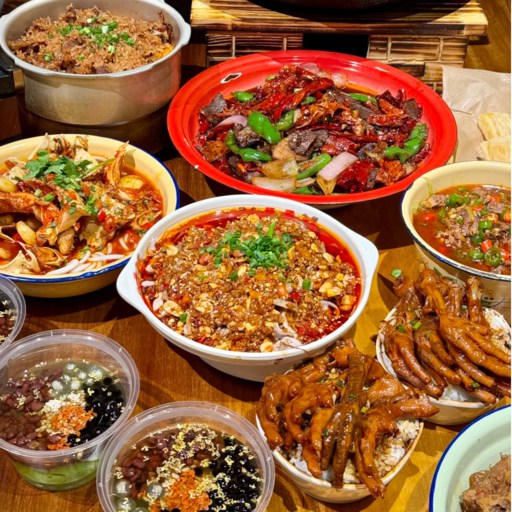Beijing is an intersection of ancient traditions and modern vibrancy, and a city appreciated by gastronomes. The food capital of China offers steamed buns and peking duck even in the remote corners of the city. The temples, lavish markets, and delicious aromatic local cuisines parallel the rich history of China's capital. This guide will ensure you get every culinary delight the place offers, whether looking to take your stretch with local street food on hawker stalls of small towns, or a gourmand seeking hedonism. Buckle up to immerse yourself in the uncontrollable fusion of thrilling aromas and innovation.
What to Expect on a Beijing Food Tour?
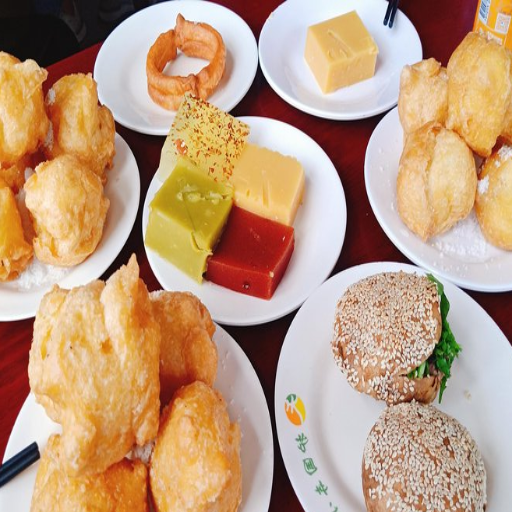
What are the highlights of a culinary adventure in Beijing?
Undoubtedly, a culinary adventure in Beijing is unlike any other, with the perfect blend of old and new in the food world, starting with the Peking duck, which is a true testimony of centuries of love, where the skin is incredibly crisp. At the same time, the meat is tender and packed with flavor. For a more profound taste of the city, go to the hutongs where small alleyways give rise to small restaurants serving hand-pulled noodles, freshly made dumplings, and even heavily spiced lamb skewers. Wangfujing or Nanluoguxiang food markets also come to mind so that you can try street food like jianbing, Chinese crepes, tanghulu, and skewers with candied fruit.
To add even more, the internationally recognized Beijing is known for its diverse and eastern fusion, adding cosmopolitan flamboyance to the city. In addition to the delectable food, there's no shortage of tea houses that serve traditional brews accompanied by desserts like rice balls filled with sweet sesame or cakes made of red beans. Each meal tells you a different story in Beijing while simultaneously being art for the senses, giving you history, society, and creativity behind every delicious bite—a truly remarkable experience with food.
How does a walking tour of Beijing’s food scene work?
Food walking tours embrace all of Beijing’s food, especially Peking duck, Zhajiangmian, different dumplings, and the famous tanghulu. It uses traditional methods to prepare food passed down from generation to generation. You would start at the Wangfujing market and then move on to hidden streets known for their food until you reach Guijie or Ghost Street, where people eat until late at night. Besides the known specialties, the guides expose the tourists to the lesser-known special regional snacks. Often referred to as ‘crepes’, jianbing also has tanghulu, sugar-coated fruits that are popular in many regions. Food walking tours also cover the history of the city.
These tours also help participants build deeper connections with the culture and the food by telling them the stories related to the food. Different guides have unique ways of sharing stories, be it focusing on the history of certain foods, the culture, or even the artistry in every bite. Many walking tours also take you to local wet markets where vendors sell fresh vegetables, spices, and other ingredients used in Chinese cooking. There is an opportunity to interact with the vendors and chefs, which is very insightful regarding their methods and cultures. Participants get to enjoy the diverse flavors of the food offered and walk through the city of Beijing, which helps them understand and appreciate the rich history of the food culture.
What types of food can you try on a breakfast food tour?
The breakfast food tour in Beijing particularly focuses on the capital's different dishes. One dish one can expect to find on their visit to Beijing is jianbing. It is one of the famous Chinese breakfasts, often compared to France's rich and delicious galette. Jianbing,_credentials are made with a batter of wheat flour with a bit of mung bean flour, which is shallow fried with crispy wonton skins, eggs, sauces, and green onions on top. This dish is often considered a traveler's and natives' favorite breakfast due to its mouthwatering flavor.
Another quintessential breakfast offering is douzhi (fermented mung bean milk), often paired with youtiao, a deep-fried dough stick that many liken to a Chinese-style churro without the sweetness. This classic combination is frequent for its mingling of mildly sour and savory flavors representing traditional Beijing cuisine. Also, akin to dimsum are steamed buns with fillings of pork or sweet red beans, which add a comforting, hearty weight to the ensemble. For those who prefer light options, bowls of congee, a warm rice porridge topped with pickled vegetables, peanuts, or shredded chicken, help ease the ache of a long night’s sleep more gently.
From sweet, sticky sesame buns known as shaobing to spicy, tangy Beijing noodles, the options on a breakfast food tour are diverse and abundant. Every dish tells hundreds of years of Beijing’s rich history through its distinctive ingredients, methods of preparation, and masters from different cuisines. More than just food, these tours focus on breakfast and provide an unforgettable full-day experience, allowing travelers to stroll through vivid streets and markets, witnessing the process of preparing, serving, and eating treasured food among the people.
Why Choose Hutong Tours for Authentic Experiences?
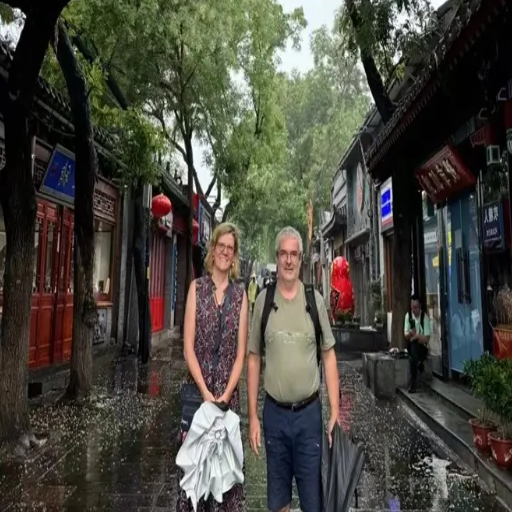
What is the significance of hutong culture in Beijing?
Hutongs form an essential part of Beijing's culture and history, providing insight into the city's traditions. The narrow alleyways and courtyard residences date back to the Yuan, Ming, and Qing dynasties and used to serve as community-based housing for families over many generations. Apart from their unique architecture, hutongs symbolize the bygone era of neighborly interactions, where slower rhythms of life enabled the ease of traditions being upheld and handed down from generation to generation.
Each hutong tells a unique tale, which could be rooted in history, ancient trades, or significant geographical locations that symbolize the growth of Beijing. They showcase a blend of the past and the present, including stylish cafes, boutiques, art galleries, and traditional siheyuan courtyards. In modern day, the hutongs are no longer just historical relics. Still, many are designated as protected zones with urban preservation policies to maintain the outstanding universal value, along with portions set aside as living spaces to commemorate and showcase culture. Walking through the lanes is a genuine way to reconnect to Beijing’s culture, making them indispensable for locals and tourists.
Which hidden gems can you find in the hutongs?
Beijing's hutongs conceal treasures blending artistry and local life, just to be uncovered. A notable treasure is the Nanluoguxiang area, which features traditional construction alongside modern creativity. As a historic street, it is one of the most balanced around. The same can be captured from Drum and Bell Towers, one of the landmarks used to tell time in old Beijing, giving you a panoramic view of the surrounding hutongs.
If we talk about food, tucked away restaurants such as street-side dumpling shops or noodle shops quickly become a beloved treasure for any food lover. But that's not all, the hutongs host of boutique guesthouses further immerse visitors into the local culture, with every turn of a corner revealing ancient, mesmerizing stories and experiences of Beijing. Art and culture enthusiasts won’t be disappointed by the Shijia Hutong Museum, which can capture and display life in old Beijing.
How do alley tours differ from traditional food tours?
Alley tours and food tours distinctly stand out for different types of travelers. While offering a glimpse of the region's culinary scene, traditional food tours mainly showcase a specific area's cuisine, focusing on hallmark dishes and popular eateries. These tours have a set program, during which the participants are enlightened regarding the history of the food and its preparation, as well as the cooking rituals and lore surrounding it. Although these tours offer a wealth of flavors and culture, they are limited to gastronomic aspects with little regard to the surroundings.
A bit more inclusive, alley tours integrate food sampling with local culture, history, and even architecture. Beijing hutongs and the backstreets of Istanbul are some examples of locations rich in history and home to narrow alleys. Visitors learn about the culture and traditions and the fantastic food venues, including century-old teahouses and family-run eateries. In addition to food, they learn about the evolution of the community’s alley systems and other unique architectural styles in the region. This integration of storytelling and cuisine makes alley tours more intimate.
While traditional food tours focus on gastronomy as their main appeal, alley tours cater for deeper understandings through a fusion of gastronomy, history, and city life. These tours appeal to those looking for an encounter beyond just the taste of the food while providing the sights, sounds, and stories that complement the culture for a deeper understanding.
What are the Best Beijing Food Tours Available?

How do you choose the right food tour for your taste?
Choosing a food tour requires considering your preferences and food and culture interests. For example, are you excited to try the quintessential dishes from Beijing, like Peking duck or street food snacks? Consider also the tour format, either guided walking tours that cover specific neighborhoods or market tours that place you right in the thick of the action in food markets of bustling Beijing. As with any other tour, pay attention to group size and composition and how it impacts your experience—while smaller group tours are tailored and intimate, larger tours may feel busier and energetic.
Additional aspects to consider are the tour length, the time of day (tours centered around meals such as dinner and morning market tours), and the ratio of history or narrative portion to the food stops. Prioritize tours that showcase local authenticity, like family-run or century-old restaurants, because they give insight into the food and culture. Finally, pay attention to reviews and vetted itineraries to cherry-pick the experience that best suits your pace and interests for a profoundly unforgettable culinary exploration in Beijing.
What makes the Lost Plate food tours unique?
Offering a quintessential off-the-beaten-path traveling experience, the Lost Plate food tours are strikingly immersive and authentic. Travelers are connected intrinsically with the energizing culture of the place with the aid of profound family-owned eateries, which have been serving culinary delights for ages. These tours are planned meticulously to allow the participants to escape the trodden paths and visit regions where only locals possess the 'access' passport. Tailored private group excursions emphasize untold deliciousness with a storytelling atmosphere that enables each guest to be transported into the very essence that defines the cuisine, along with its history.
One of Lost Plate's remarkable features is its attention to group size, fostering an environment where each participant can interact with the guides on a personal level. Besides navigating, expert guides captivate the group by explaining the rich history, cultures, and development of the local cuisines, incorporating an engaging storytelling component to the journey. Lost Plate offers a streamlined approach for travelers exploring a city's food scene, preparing step-by-step itineraries filled with mouthwatering dishes that blend family recipes and contemporary culinary art.
Lost Plate incorporates unique modes of transport into some of their tours, like tuk-tuks, which makes getting from place to place a rollercoaster of fun. Their relentless commitment to food quality, authenticity, and unparalleled customer care keeps accumulating praise and 5-star reviews, which, in turn, strengthens their position as one of the best food tour operators for travelers and food lovers. Lost Plate ensures your culinary escapade, whether a first-time visitor or a seasoned traveler, will be unforgettable, offering endless exploration and flavors that are equally rewarding and savory.
Recommended Private Tours for a Personalized Experience
Individual private tours provide the most comfort and convenience for clients looking for precision-tailored service. The individualized pace at which guests would like to explore the culinary landmark meets their specific food tour needs. Guests who opt for private culinary excursions can engage with local chefs, visit desirable places off the beaten path to taste traditional fare unavailable in larger outings, and sample food bespoke to them. From a comprehensive examination of street food culture to high-end restaurant tasting dinners, private tours will cater to your specific wishes, providing flexible scheduling while maintaining captivating and effortless experiences.
Some dining tour operators integrate cultural elements in their culinary excursions for guests. Other cuisines might not be available in some regions of the globe, like in modern international cities, so some firms combine local cuisine sampling with guided walks in famous historical areas or visits to handcraft shops offering travelers gaps in their itinerary to make the most out of their journey. This integrated method demonstrates the region's cuisine and immerses tourists into the country's fascinating past and rich, diverse culture. Moreover, private custom tours are designed with flexible itineraries, guides, or local hosts, allowing travelers to obtain information under the surface, hidden facts, tips, and suggestions to make the journey even more fulfilling.
In addition, private tours are ideal for small groups like families and couples. Participants get opportunities to interact over shared experiences and spend quality time together away from larger crowds. Private tours also cater to and accommodate certain dietary restrictions and even specific culinary niches like wine pairings, dessert-driven agendas, and vegan options. Selecting private tours guarantees comfort and flexibility, resulting in an authentic travel experience.
How to Experience Beijing Like a Local?
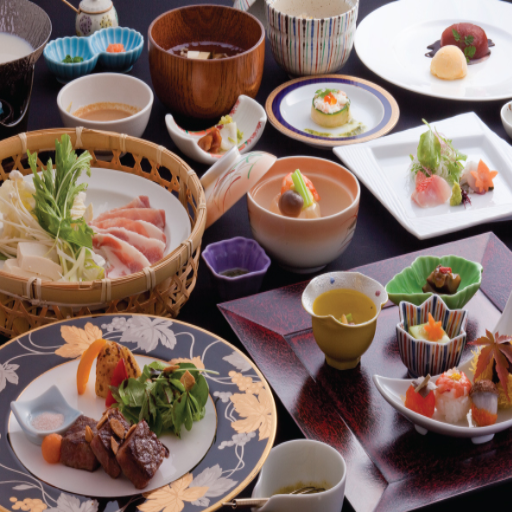
What are some tips for eating like a local in Beijing?
Exploring the culinary landscape of any place is often best done by starting off the beaten tracks. To experience the local food scene in Beijing, you must go beyond the tourist hotspots. Set off your culinary adventure at Sanyuanli Market, where you can grab a freshly made jianbing, a crepe filled with egg, green onions, and crispy wonton, with delicious deep-fried wontons on the streets. Grab a jianbing from any street vendor in the morning for an authentic Beijing-style breakfast.
No trip to Beijing would be complete without a visit to one of the hutongs or historic alleyway family eateries. Dig into some authentic zhajiangmian, noodles with soybean paste, or stuffed dumplings and savor the local culture. Also, don’t forget to visit specialized Peking duck restaurants like Quanjude or Dadong to try this famous dish. You can also check out Meituan or Dianping for local recommendations.
Finally, remember the timing and eat every meal early. Prime dishes, including Peking duck, often sell out and are limited to certain hours of the day. Eat like a local to enhance your experiences and learn more about Beijing’s culinary delights.
Which street food items should you not miss?
Beijing has a rich culinary history, and its street food offerings can showcase some of its traditional flavors and distinct textures. One quintessential option is Jianbing, a category of Chinese crepes filled with egg, scallions, fermented bean paste, and a crispy wonton cracker. Its flavor balance makes it a breakfast favorite among locals. You can also find candied hawthorn skewers, more widely known as Tanghulu. These are often seen during the cooler months, brightly shining in the hands of street vendors.
You can find Baozi (steamed buns) if you head to the southeastern parts. These are filled with pork, vegetables, or lamb, making them hearty yet affordable. For late snacking, Chuan’r is a popular dish; these are pieces of meat on a skewer, seasoned with cumin and chili, and grilled. A traditional drink from Beijing that has been paired with crispy fried dough rings is Douzhi, which is fermented mung beans.
You can find all these dishes at night markets or streets like Wangfujing and Qianmen. Not only will you enjoy satisfying food, but you will also witness the dynamic essence of Beijing’s rich culture.
How do you navigate the backstreets for local delicacies?
Exploring the backstreets of Beijing to find local delicacies is a blend of adventure, research, and a willingness to venture off the beaten path. Look up some well-known snack streets and the surrounding areas famous for their food treasures. Donghuamen Night Market and the hutongs around Gulou and Nanluoguxiang are good starting points for your journeys. These areas have numerous food stalls and small restaurants serving authentic street snacks like Jianbing (savory crepes) and baozi. Having a map or a location tracking app will be very useful in ensuring you do not miss any hidden food spots.
Another excellent method to find local foods is to see where the locals are queuing. Locals and tourists alike are often drawn to exceptionally delicious food, so where there are queues of waiting customers, there is a good chance the food available surpasses expectations. Look out for menus and signs written in Chinese; although they may look intimidating at first glance, it means that the place is frequented by residents and, therefore, more likely to serve real food. Furthermore, asking locals can provide excellent recommendations. Most locals are willing to give directions or suggest places, so do not hesitate to ask.
Your senses will fully engage when you find yourself in the busy, narrow streets and alleys. The backstreets have much to offer, from sizzling food booths to lively local midnight snack spots. During the famous food stall hours, the air is filled with fragrant grills, crackling woks, sizzling tenders, and grills all hustling to capture the attention of sizzling snackers. The local love and warmth make the experience even better. The savory scent emanating gives an inviting essence. Every mouthful is a vivid treasury of diverse cuisines, promising culinary delights unique and bound to be adored.
Are Evening Food Tours Worth It?
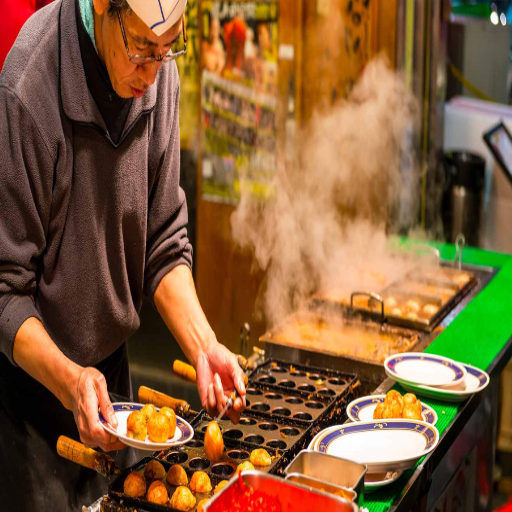
What can you expect on an evening food tour?
During an immersive evening food tour, one can relish experiencing the local food culture. In my case, this involves savoring dishes while learning their history from a professional guide. The best part is the hands-on walkthrough where visitors partake in the local delicacies. The city has a rich culture so visitors can sample meals from street vendors, local smokehouses, and even fine dining establishments. For example, I enjoy the vibrant and rich spice of grilled skewers set alongside steaming hand-pulled noodles.
A special preference of mine emerging from food tours involves socializing and connecting with the locals. Many people are open to sharing the methods of how they create the meals, all while revealing intricate family stories like those of those who taught the art of sushi-making. Another enjoyable element is the hidden flavors in many everyday meals. The beauty is found through the universality of trying food and the vast possibility of trying something new. Pushing my boundary of going for the unassuming complex meal is a good habit to develop while on tours. The atmosphere of the nighttime tour is left surrounded by beams of lights, combined with cheerful hustle, which adds to that experience.
Apart from the evening tours, the food serves as a gourmet delicacy appreciation within the cultures and provides the customers with a sense of traveling to a new culture with every bite. It fulfills all the senses and delivers the cuisines from that region, giving you a taste of the diverse cuisines a culture offers. Even by the end, I am fully content and feel my efforts do complete justice for every activity, cuisine, and rigor I spent.
Which dishes are typically featured during a dinner tour?
The indulgent, adorably set settings, from deserts to cuisine preferences, are matched for all guests who visit during dinner time. As for the tour cuisine collage, our starters comprise amazing appetizers for street food categories like incredible braised dim sums or fried ribs served to perfection, Pineapple meat-skewers drenched in piquant seasoning, and grilled. These appetizers bring a bold essence to the event that is highlighted during the event and focuses on what is essential, authentic skills. At times, untried finger foods from one region are not heard, inviting wonder and the motivation to recycle, and can offer renewed excitement.
As part of the journey, the tour includes delicious signature dishes served as the main course, showcasing the region’s hearty cuisine. Consider steaming fragranced noodles, mouthwatering curries, or freshly cooked fish dishes in communal, shareable bowls. Each dish delights your taste buds and accompanies a tale, be it the recipe’s history or the family-run establishment behind it. They portray food’s role in uniting communities and how it intertwines generations.
Needless to say, every dinner tour has to include an energizing dessert. Irresistible desserts such as creamy coconut puddings, light pastries, and fruity shaved ice are excellent complements to round off the dinner and are refreshing. Every course builds upon the last meal, providing a seamless transition in a culinary journey. These dinner tours gave me a better understanding and deeper appreciation of the local foods and culture and helped fill my stomach.
How do evening tours showcase the culinary heritage of Beijing?
Beijing evening tours particularly stand out as they highlight the city’s culinary heritage juxtaposed with its vibrant history. Walking through the sprawling night markets and the small local restaurants gives a sneak peek into the incredible variety of traditions offered. Beijinv cuisine is a combination of old-age delicacies and contemporary dishes, including steamed dumplings and various types of skewered foods. Every dish has an interesting tale, with Beijing duck and jianbing being two very popular and classic Peking dishes.
These tours particularly focus on providing authentic experiences by dealing directly with the chefs and local vendors. Each food has a story and reason to be prepared, bringing deep cultural values. Understanding the culture and the stories behind every food opens a better appreciation of the culinary delights around the city.
Apart from the cuisine, the night setting in Beijing is also significant. People are talking and laughing, while busy streets come to life with lanterns. Chuck’s is an energy-filled place and so warm. Through these tours, visitors get more than just the taste of Beijing; they also experience its spirit while enjoying its rich history alongside the pulse of the city.
Frequently Asked Questions (FAQs)
Q: What does the food tour include in Untour Beijing's Offering?
A: The Over Untour Food Tour in Beijing includes walking through the city's food culture and stopping for delicious food like dumplings, noodles, and hot pot. Participants walk through the hutong alleyways to gain an insider’s knowledge of the city’s food culture.
Q: What does Bai Yi Ji Restaurant's “Old Beijing Food Tours” offer as a branded Exclusive Dining Experience
A: The Old Beijing Food Tours' unique storytelling and powerful guiding help capture the unforgivable narrative to tell throughout the alleys of Beijing's old hutong nooks and crannies, offering a rich tasting experience of Peking duck and Beijing hotpot, thus enabling the everyday series to dive deeper into the city’s historical food culture.
Q: Could I also visit the Great Wall on the food tour?
A: It is to be noted that food tours often center around food, but some full-day tours can be designed to enable the visit of the Great Wall, followed by a few stops to enjoy some delicious food.
Q: What breakfasts can I have in Beijing?
A: In Beijing, breakfast tours offer a selection of local pancakes, buns, and various steamed noodle dishes. In addition to the food, the tours highlight the city’s breakfast-related activities during the early hours.
Q: What is the procedure for booking a Beijing food walking tour?
A: Walking food tours in Beijing are available on the operator’s site. To ensure a smoother experience, it is always best to book as early as possible in the off-travel season.
Q: Are there available local guides for the food tours?
A: Local guides for food tours are readily available in Beijing. In addition to navigating you through the historic and modern culinary alleys, they also educate and give context regarding important events relating to the dishes.
Q: What can I look forward to with Untour Food Tours on a Night Tour?
A: As expected from other Untour Food Tours, you will explore Beijing's night markets and savor some of the many street foods offered. This tour is special in the sense that it will offer you views of the city during the night and also during nighttime food culture.
Q: Is Untour Food Tour appropriate for families?
A: Not. The Untour Food Tour is designed to be family-friendly and appropriate for every age. It gives the family a fantastic opportunity to learn about the city's culinary culture while also spending quality time together eating delicious food.
Q: How long is a food tour of the capital, which lasts 3 hours, in your opinion?
A: Food tours in the capitals are designed to give participants as much enjoyment as possible in a short time period, up to 3 hours. Participants are guaranteed to be taken to several food locations, which they will remember not just from pictures but from actually walking through Beijing city's old Hutong area alleys with a local guide.

